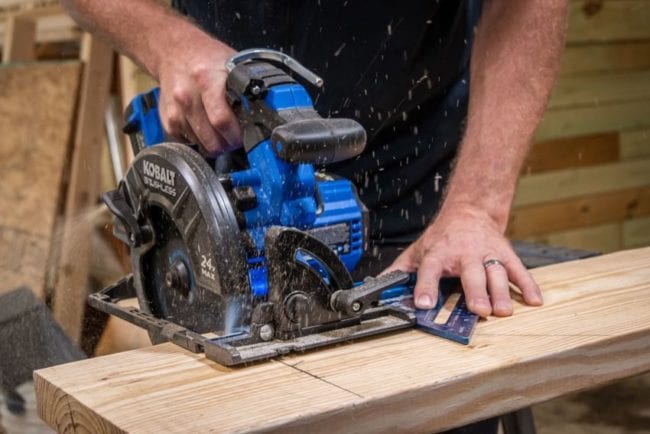Cutting straight with a circular saw is essential for achieving clean and precise cuts in various woodworking and construction projects. Here’s a quick guide on how to cut straight with a circular saw:
- Measure and mark your workpiece accurately.
- Set the blade depth just below the material’s thickness.
- Secure your workpiece on a stable surface.
- Use a guide or straightedge, clamped in place, for a straight cut.
- Adjust the bevel angle if necessary (usually keep it at 0 degrees).
- Start the saw and slowly follow the marked line or guide.
- Don’t force the saw; let it cut at its own pace.
- Turn off the saw and inspect your cut for straightness.
- Make adjustments if needed, and ensure safety precautions are followed.
How Can You Achieve Perfectly Straight Cuts with a Circular Saw?

Unlocking the secrets to achieving flawlessly straight cuts with a circular saw requires a combination of technique, tools, and precision.
Measure and Mark
Precision is key. Use a measuring tape and a carpenter’s square to measure and mark the exact location of your cut on the workpiece. Ensure your measurement is accurate to avoid mistakes. Additionally, use a sharp pencil or marking knife for your mark. A fine line makes it easier to follow during the cut.
Moreover, double-check your measurements before proceeding to ensure they are correct.
Set Blade Depth
Adjust the depth of the circular saw blade carefully. The blade should extend just below the thickness of the material you are cutting. This prevents the blade from cutting too deep and causing kickback.
Furthermore, A general rule is to set the blade depth about 1/8 inch beyond the material’s thickness, but this can vary depending on your specific project.
Secure the Workpiece
Properly securing the workpiece is crucial for safety and accuracy. Place it on a stable surface, such as a workbench or sawhorses, so it won’t wobble or move during the cut.
In addition, you can use clamps to hold the workpiece firmly in place, ensuring it won’t shift during the cutting process.
Position the Guide
If you’re using a guide or straightedge, align it precisely with your marked cutting line. Ensure it’s straight and securely clamped down to the workpiece.
Furthermore, the guide serves as a reference for your saw to follow, ensuring a straight and precise cut.
Adjust the Bevel Angle (if necessary)
Some cuts may require a bevel angle other than 0 degrees. Adjust the circular saw’s bevel angle to the required degree before making the cut. Bevel cuts are often used for creating angles or chamfers in the material’s edge.
Start the Circular Saw
Hold the circular saw firmly with both hands, one on the handle and the other on the auxiliary handle (if available). Position yourself comfortably, ensuring a stable stance. Before starting the saw, make sure the blade is not touching the workpiece.
Make the Cut
With the saw running, slowly push it forward along the guide or marked line. Allow the blade to cut through the material at its own pacedo not force it. Maintain a steady and controlled movement throughout the cut. In addition, keep your body to the side of the saw, not directly behind it, to avoid any potential kickback.
Finish the Cut
Continue pushing the saw until you have completed the cut. Be mindful as the blade exits the material. Moreover, ensure that the material is fully supported throughout the cut to prevent any splintering or tearing as the blade exits.
Turn off the Saw
Release the trigger to turn off the circular saw. Wait for the blade to come to a complete stop before lifting it away from the workpiece. Safety is paramount; never leave the saw running unattended.
Inspect and Adjust
After completing the cut, inspect the edge to ensure it is straight and clean. Check for any imperfections or irregularities. However, if adjustments are needed, use sandpaper or a plane to smooth the edge or correct any inaccuracies.
Conclusion
In conclusion, mastering the skill of cutting straight with a circular saw is fundamental for anyone engaged in woodworking or construction. It is a process that demands precision, technique and a strong focus on safety.
Starting with accurate measurements and marks, setting the blade depth appropriately, securing the workpiece, and positioning a guide all lay the foundation for a successful cut. Whether you need to adjust the bevel angle or not, initiating the saw with care, maintaining a controlled cut, and ensuring a smooth finish are vital steps.
Safety is paramount at every stage, from the use of protective gear to the proper handling of the tool. Lastly, the inspection and adjustment of the cut’s quality ensure the desired outcome. With practice and attention to detail, one can consistently achieve straight and professional cuts with a circular saw, enhancing the quality of their woodworking and construction projects.
